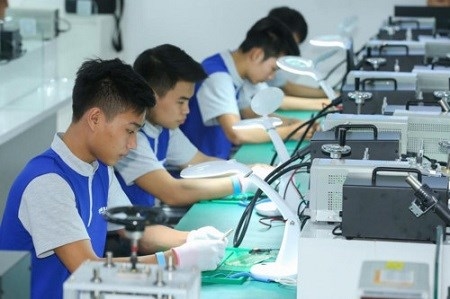According to the provincial Department of Labor, Invalids and Social Affairs, an average of 38,000 local workers are provided with jobs every year.
A wide range of measures and policies have been implemented to support workers in seeking employment.
    |
 |
|
Ca Mau focuses on development of skilled workforce. |
Links between employees and employers have been promoted through different channels, such as the internet, conferences, and job transaction sessions.
Deputy Director of the provincial Department of Labor, Invalids and Social Affairs, Tu Hoang An, said local authorities have focused on generating jobs for local workers through labor export activities.
This is an important solution that helps the locality realize its target of sustainable poverty reduction, he noted.
The positive results in job creation in Ca Mau can be attributed to the efforts of relevant agencies and those operating in vocational training and job introduction.
Ca Mau’s population stands at nearly 1.2 million people, including 690,000 workers aged 15 and over. Local workers are mainly self-apprentices or self-employed, using the available resources of their families.
As of the beginning of 2021, the rate of trained workers in Ca Mau was over 50 percent.
Director of the provincial Department of Labor, Invalids and Social Affairs Nguyen Quoc Thanh said the locality will continue to invest in expanding the scale of the Vietnam-Korea Vocational School, to properly conduct training to meet requirements in each field, with priority given to key occupations and those serving the province’s priority economic sectors.
Efforts also aim to satisfy the recruitment demand of businesses amid the fourth Industrial Revolution, Thanh said.
Attention has been also paid to promoting training and the development of the local workforce, and attracting outside workers to meet the locality’s development demand, he added.
Thanh said provincial authorities have proposed the Government soon issue new policies relating to training support for workers from policy beneficiary families and ethnic minority groups, demobilized soldiers, people with disabilities, and rural workers.
Source: VNA